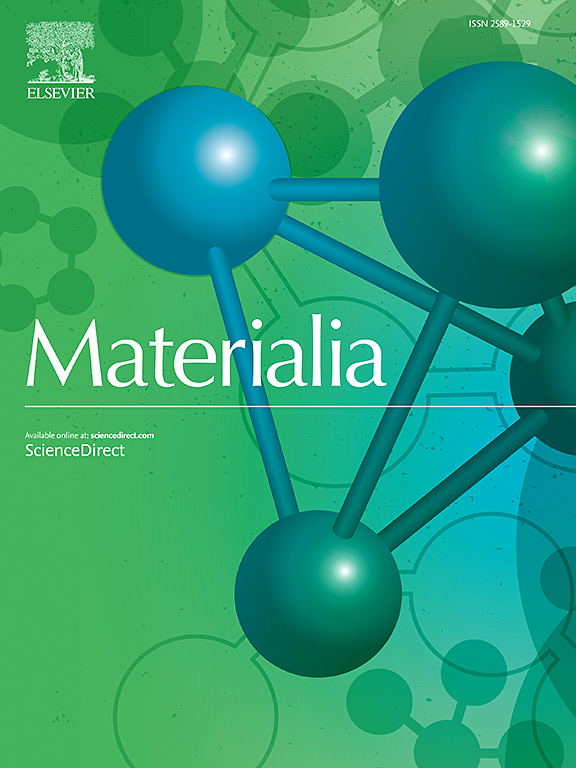轧制后表面处理对双相和奥氏体不锈钢钢筋腐蚀性能的影响
IF 2.9
Q2 MATERIALS SCIENCE, MULTIDISCIPLINARY
引用次数: 0
摘要
这项研究阐明了不锈钢(SS)螺纹钢表面处理与高氯化物环境中耐腐蚀性之间的复杂关系,使用显微镜、分析、传统电化学和新型腐蚀显微镜技术进行了短期和长期评估。先前对碳钢的研究报告称,微米级缺陷(裂纹和孔隙)会使氯离子到达基体钢,从而降低耐腐蚀性。本研究对四种不同表面类型的三种SS等级进行了研究,结果表明,高Cr含量提高了SS等级的致密性,减少了内部(Fe-Cr)微米级层的缺陷,从而具有更好的耐腐蚀性,这种耐腐蚀性随表面处理方法、合金成分、混凝土成分和氯化物暴露方法的不同而不同。尽管外(铁)层有缺陷,但轧后(AR)棒材的耐腐蚀性与轧后处理棒材相当或更好。单独用机械爆破或酸洗处理不锈钢表面会恶化腐蚀性能,因为爆破颗粒会嵌入钢筋表面和/或存在松散的残余磨屑。喷丸和酸洗(SBPK)同时使用会导致棒材表面产生微坑,从而降低其耐腐蚀性。此外,本研究还表明,孔溶试验不能充分反映SS磨鳞的腐蚀性能,因为孔溶试验将氯离子均匀地暴露在磨鳞中,导致磨鳞均匀溶解导致腐蚀速率高,基底暴露更快。这种行为不同于在混凝土中遇到的情况,在混凝土中,不均匀的氯化物暴露会导致不均匀的磨级溶解和底层基材的较低腐蚀。总的来说,这项工作表明,在制造商和批次之间实现一致的卷后处理或原始SBPK表面比实现均匀的磨级更具有挑战性,这使得AR SS螺纹钢成为一种具有成本效益的耐腐蚀建筑选择。本文章由计算机程序翻译,如有差异,请以英文原文为准。
Contribution of Post-Rolling Surface Treatment to Corrosion Performance of Duplex and Austenitic Stainless Steel Reinforcing Bar
This study elucidates the complex relationship between stainless steel (SS) rebar surface treatment and corrosion resistance in high chloride environments using microscopy, analytical, and conventional electrochemical and novel corrosion microscopy techniques in a short- and long-term assessment. Previous studies on carbon steel reported that millscale defects (cracks and porosity) compromise corrosion resistance by allowing chloride ions to reach the base steel. This study examining three SS grades with four different surface type shows that their high Cr content improves compactness and reduces defectiveness of the inner (Fe-Cr) millscale layer, resulting in better corrosion resistance which varied with surface treatment methods, alloy composition, concrete composition, and chloride exposure method. Despite its defective outer (Fe) millscale layer, as-rolled (AR) bars showed comparable or better corrosion resistance than bars subjected to post-rolling treatment. Treating SS surface with mechanical blasting or acid pickling alone deteriorates corrosion performance due to embedment of blasting particles into rebar surface and/or the presence of loose residual millscale. Employing both shotblasting and acid pickling (SBPK) causes micropits to develop on the bar surface, which deteriorates corrosion resistance.
Additionally, this study also show that pore solution tests do not adequately reflect the corrosion performance of SS millscales because such test uniformly exposes chloride ions to millscales, causing high corrosion rate resulting from uniform millscale dissolution and quicker exposure of underlying substrate. This behaviour is different from that encountered in concrete where non-uniform chloride exposures causes non-uniform millscale dissolution and lower corrosion of underlying substrate. Overall, this work shows that achieving consistent post-roll treatment or pristine SBPK surface between manufacturers and batches is a bigger challenge than achieving homogeneous millscale, making AR SS rebar a cost-effective corrosion resistant option for construction.
求助全文
通过发布文献求助,成功后即可免费获取论文全文。
去求助
来源期刊

Materialia
MATERIALS SCIENCE, MULTIDISCIPLINARY-
CiteScore
6.40
自引率
2.90%
发文量
345
审稿时长
36 days
期刊介绍:
Materialia is a multidisciplinary journal of materials science and engineering that publishes original peer-reviewed research articles. Articles in Materialia advance the understanding of the relationship between processing, structure, property, and function of materials.
Materialia publishes full-length research articles, review articles, and letters (short communications). In addition to receiving direct submissions, Materialia also accepts transfers from Acta Materialia, Inc. partner journals. Materialia offers authors the choice to publish on an open access model (with author fee), or on a subscription model (with no author fee).
 求助内容:
求助内容: 应助结果提醒方式:
应助结果提醒方式:


